Daniel Price (University of Exeter) and
Stephan Rosswog (International University
Bremen), Science 2006.
All of the images and movies on this page are strictly embargoed for discussion in the
press until: Thursday 30th March at 2:00pm EST (ie. 8:00pm British Summer Time).
Press release
Images
Movies
Further background
Press Release:
"Unravelling a cosmic mystery - Scientists discover the Universe's strongest magnetic field"Preprint of paper:
"Producing ultra-strong magnetic fields in neutron star mergers" (900Kb pdf)Images
Click for higher resolution versions. Use of any images is free for non-commercial purposes on the condition that they be accompanied by the line: Credit: Daniel Price (U/Exeter) and Stephan Rosswog (Int. U/Bremen). For any commercial use permission MUST be sought.
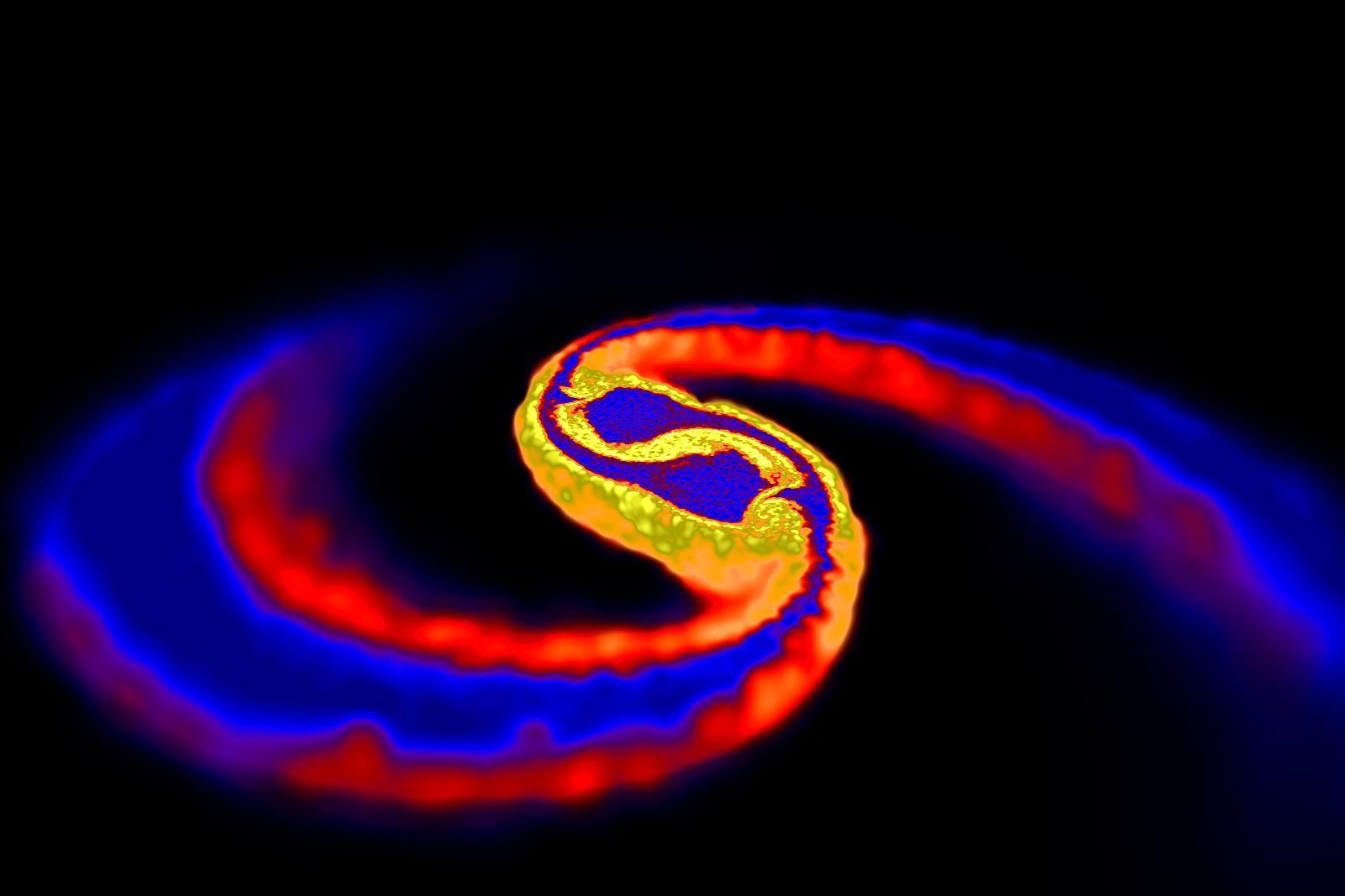
|
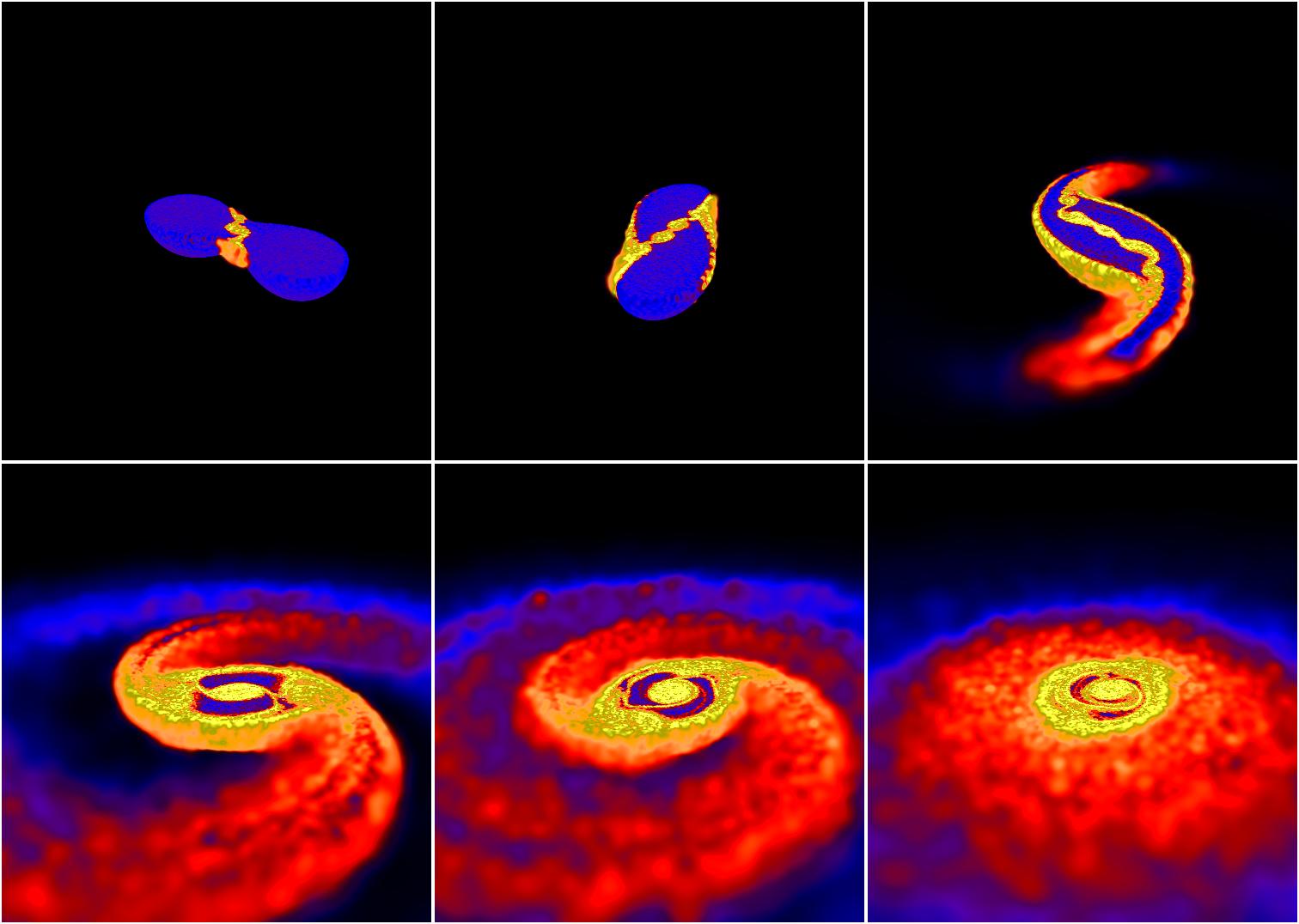
|
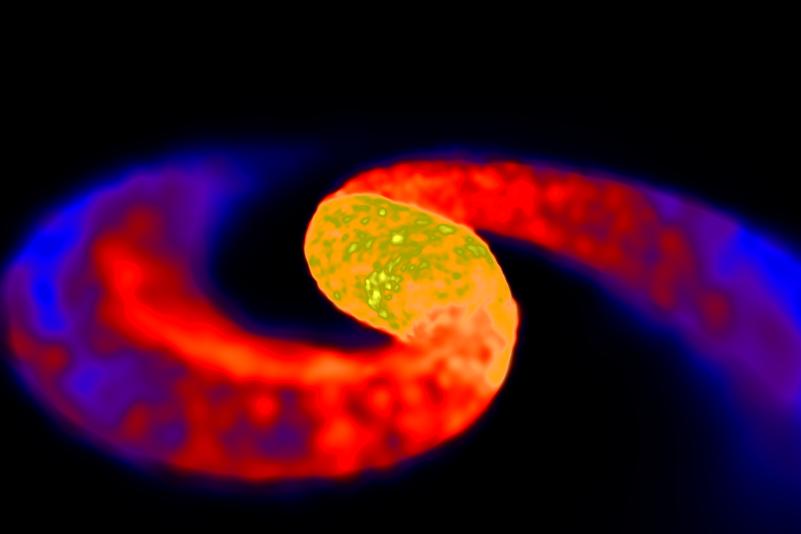
|
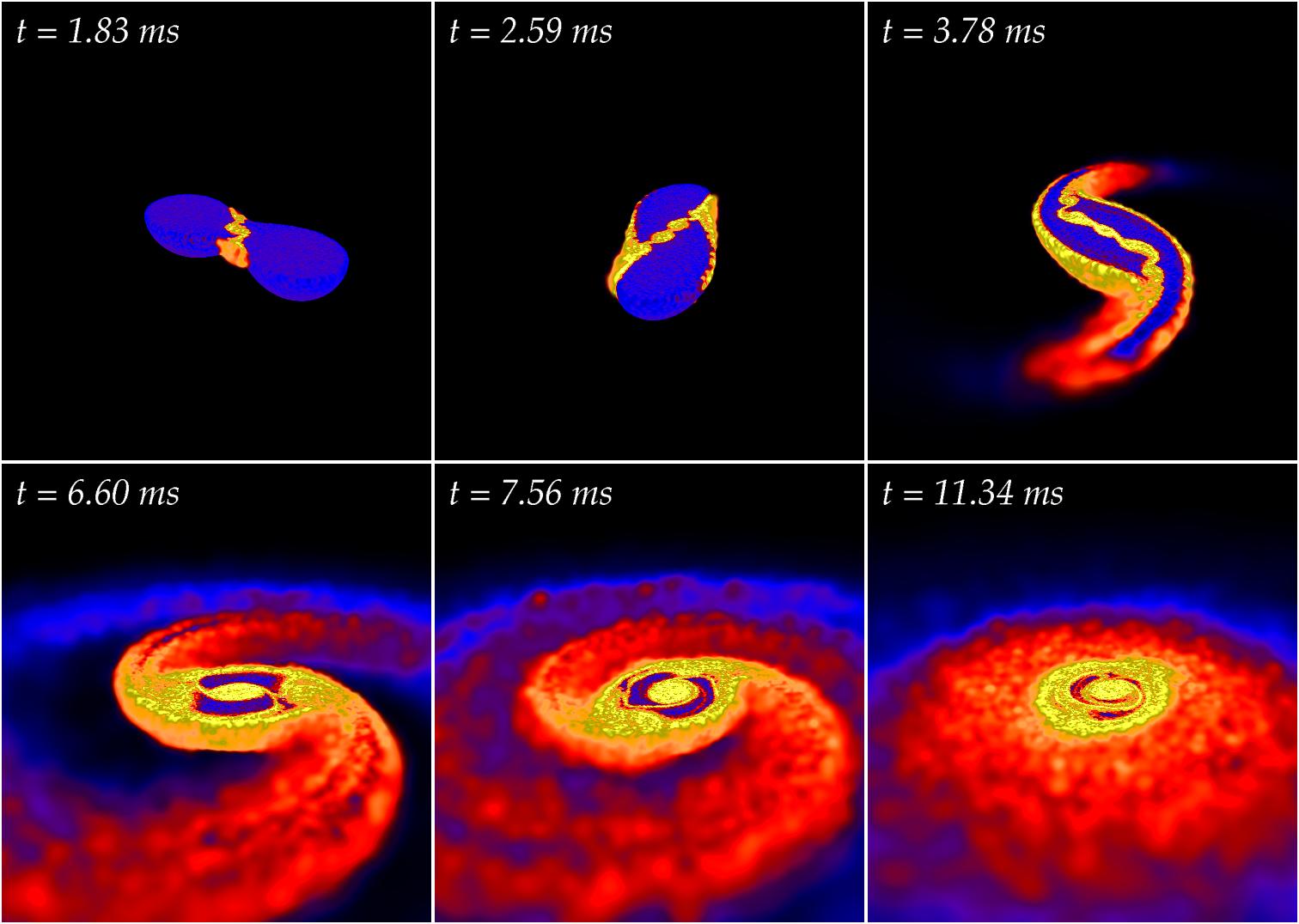
|
Movies
Alternatively some movies are also given in .flc format which can be played on unix systems using xanim.
To see a directory listing of all of the movies, click here.
Special thanks go to Alex Zavatone for making the movies 10x smaller!
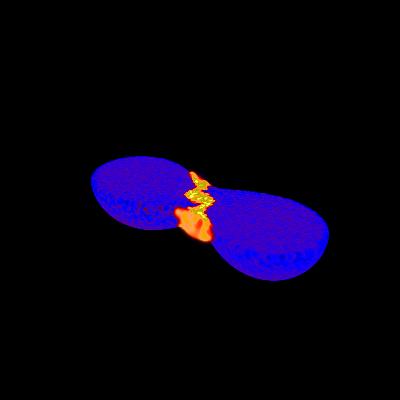 Full length Quicktime (7.4Mb) |
Description: Animation of the coalescence of two magnetised
neutron stars, with the colours showing magnetic field strengths in the
material at and below the
orbital plane. The animation shows the first 12 milliseconds of the
merger and has dimensions of
approximately 140 km from left to right. The stars move gradually
towards each other and then merge in a ``plunging phase'' within about
one orbital period. This object sheds mass into spiral arms that are
subsequently wrapped around the central object to form a hot torus. The
magnetic field is amplified in the shear instability between the stars
and subsequently advected
with the matter to cover the surface of the central merger remnant.
Formats:Full length 800x534 half-stars animation: 7.4Mb Quicktime .mov, 103Mb .flc formatShorter length 800x534 half-stars animation: 21Mb Quicktime .mov , 39Mb .flc format High resolution 1600x1068 half-stars animation: 16.1Mb Quicktime .mov |
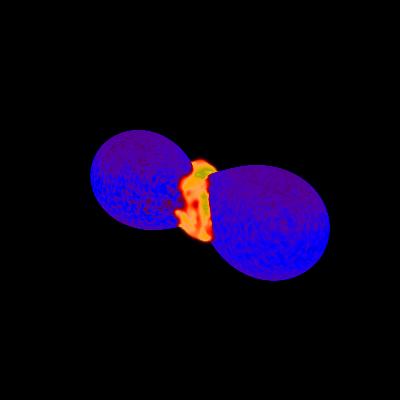 Quicktime (2.8Mb) Quicktime (2.8Mb) |
Description: Animation of the coalescence of two magnetised
neutron stars, with the colours showing magnetic field strengths at the
surface. The animation shows the first 8 milliseconds of the merger and
has dimensions of
approximately 140 km from left to right. The stars move gradually
towards each other and then merge in a ``plunging phase'' within about
one orbital period. This object sheds mass into spiral arms that are
subsequently wrapped around the central object to form a hot torus. The
magnetic field is rapidly amplified and
strong field pockets (coloured yellow-white) can be seen to quickly
cover the surface of the central merger remnant.
Formats:Shorter length 800x534 full stars animation: 2.8Mb Quicktime .mov, 59Mb .flc format |
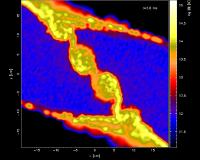 Quicktime (25.8Mb) Quicktime (25.8Mb) |
Description: The evolution of the magnetic field is shown in a cross section through the
midplane. Fluid instabilities cause the interface to curl up into vortices. It is in these vortices
that the field is strongly amplified.
The strength of the magnetic field may be compared to the colour bar on the right, where
field strengths > 10^15G represent those stronger than any previously known (ie. in Magnetars).
Formats:Cross section slice animation: 25.8Mb Quicktime .mov |
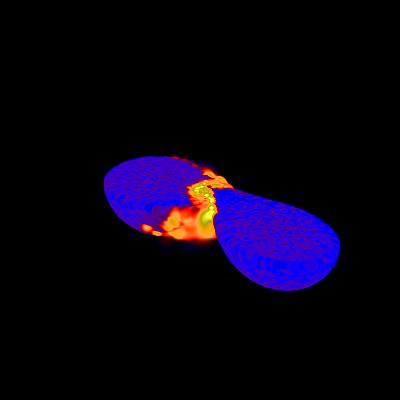 Quicktime (2.4Mb) Quicktime (2.4Mb) |
Description: In this animation, two stars of different initial masses were used (star 1 has 1.1
times the mass of the sun, whilst star 2 has 1.6 x M_sun - in the previous simulations both stars had
mass 1.4 M_sun). The magnetic field is similarly amplified
although the geometry of the collision and subsequent torus formation is quite different.
Formats:Unequal mass ratio animation: 13Mb Quicktime .mov, 22Mb .flc format |
Further Background
- corpse of a massive star, produced in a supernova explosion
- typical neutron star mass: 1.4 solar masses
- radius: about 10 km
- densities are even higher than in the nucleus of an atom
Neutron star binaries:
- are observed in our Galaxy, to date eight such systems known.
- emit gravitational waves and therefore slowly spiral towards each other
- this decay is in accurate agreement with the predictions from Einstein's Theory of General Relativity (Nobel Prize for Physics 1993: R. Hulse and J. Taylor)
- the last minutes of before the coalescence could be detected by ground-based Gravitational wave detectors such as the American LIGO project or the German British GEO600
- the final coalescence releases a tremendous amount of energy, and is thought to produce a short Gamma-ray Burst, one of the brightest explosions in the Universe since the Big Bang
short Gamma-ray bursts:
- Gamma-ray bursts come in two flavours:
i) long bursts with a duration of about 30 s that are related to a rare type of supernova explosion and
ii) short bursts with a duration of about 0.3 s that are thought to be caused by mergers of either two neutron stars or a neutron star with a stellar-mass black hole - the presented computer simulations are the very first that take magnetic fields into account in the merger process
- Main result: within the first millisecond the original neutron star magnetic field is tremendously amplified to strength that are larger than anything known in the Universe
[ Daniel Price's home page ][ Stephan Rosswog's home page ]
[ Exeter astrophysics ][ International University Bremen ]